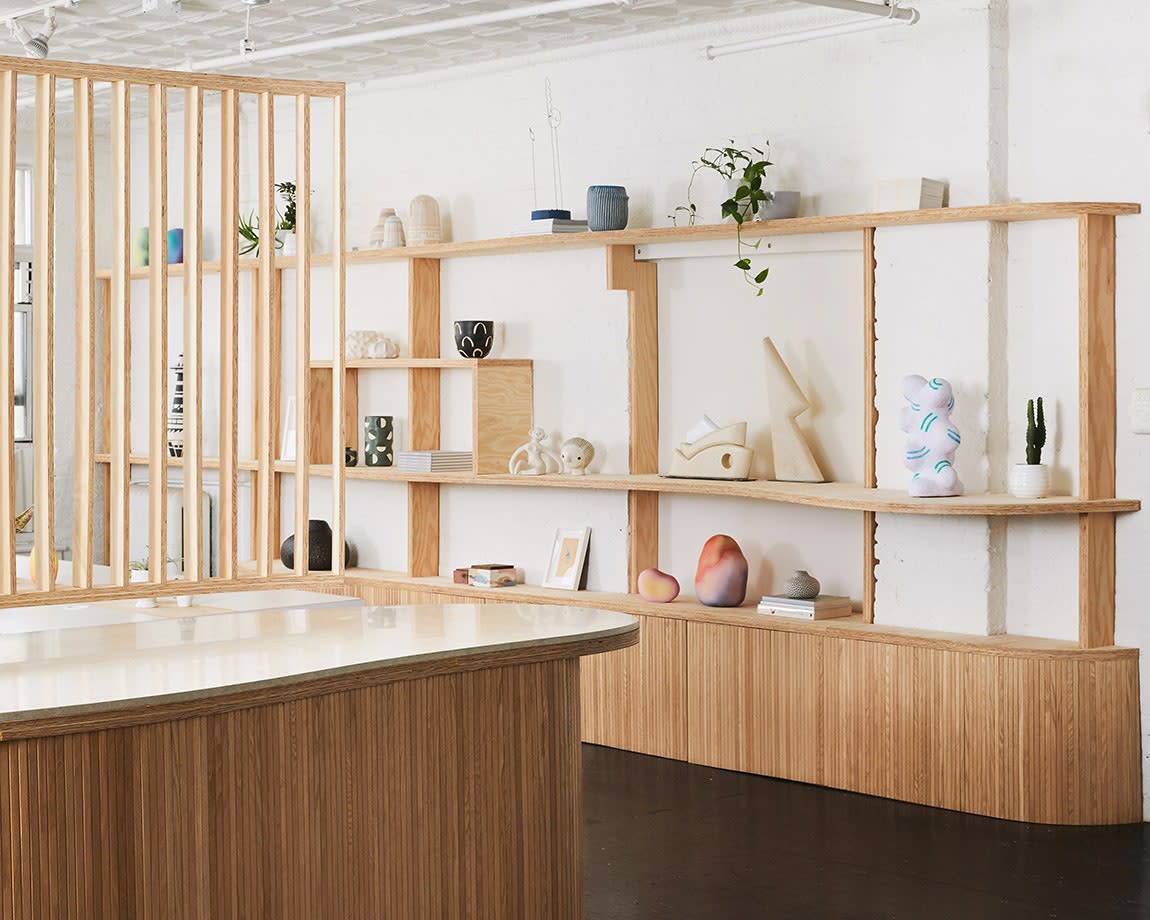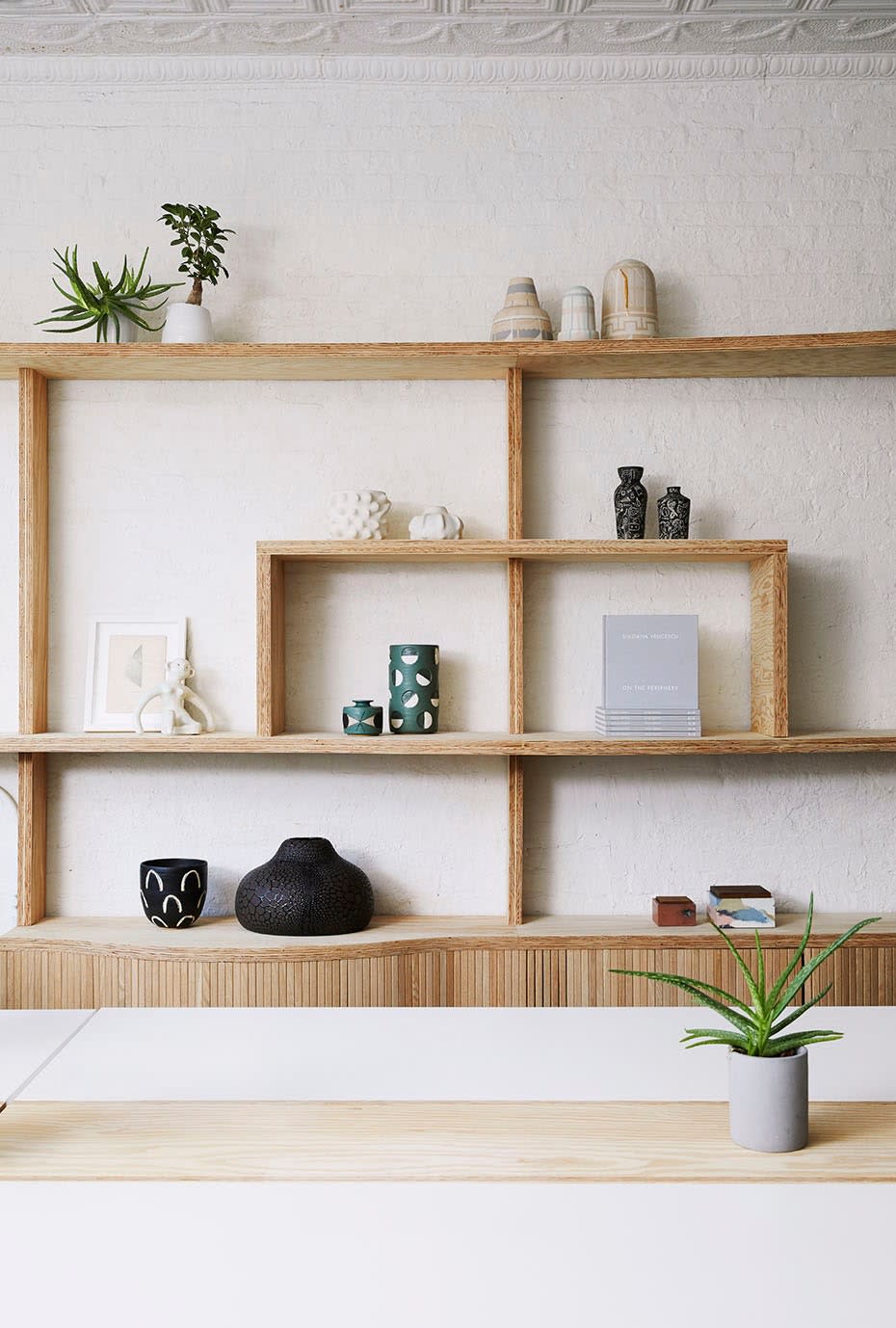This Dynamic Shelving Unit Is an Art Collector’s Best Friend

Uprise Art officesphoto by Genevieve Garruppo
Brooklyn-based interdisciplinary studio Office of Tangible Space consistently dabbles in different design media. From interiors and products to experiences like the event series People in Places, cofounders Kelley Perumbeti and Michael Yarinsky prefer not to silo themselves into one particular area. For these versatile designers, a recent project aimed at combining an office, showroom, and gallery was the perfect fit.
Employed by innovative online gallery Uprise Art, Kelley and Michael reimagined a New York City loft into a multipurpose space. “The ask was to create an office space that could house their team, but also a place where they could store and display art, host clients, and hold events,” Kelley explains. The key was to strike a balance between offering a comfortable work environment for employees and a welcoming, intriguing spot for guests.

Uprise Art offices vertical
To exhibit Uprise’s collection of sculptural pieces from emerging artists, the duo constructed a custom 20 foot-wide shelving system along one wall. Integrating the historical details of the building, Kelley and Michael built the unit to hug the wall and fit like a puzzle piece around the existing pipes and insets. They also intended the shelf to have a design language of its own, without overpowering the art that it was meant to display. “A lot of the artwork, sculptural pieces, and ceramics that Uprise had were very loud, had their own voice, had a lot of color, so we knew we wanted to use materials and a palette that sat in the background, but format it in a way that would bring your eye there,” says Kelley.
The result is an asymmetrical fir plywood unit of shelves that features a mix of curved and linear edges, providing surfaces of varying depths. According to Kelley, this irregular form supports the art itself. “It allows [Uprise] to put these wider pieces with a bit more volume in the areas where there are curves and do some more slim pieces in the areas that are straight. It creates individual moments in one larger piece,” she says.

Uprise Art offices shelf
The three shelves are intentionally arranged at unequal heights. “We didn’t want smaller objects to totally get lost on the shelves and larger objects to feel like they were overtaking them,” Kelley says. There is also a little rectangular shelf within the shelf to provide a focal point and add balance to the airy, open structure. Items that aren’t currently on display can be tucked away in the oak tambour base, which has hidden storage.
While this shelving system is one of a kind, Kelley does have advice for showcasing sculptures at home. She recommends taking stock of your objects by noting their prominent characteristics. Any piece of display furniture should be made of a material that will help elevate, not distract from, those objects. When styling, remember that scale is pivotal. Balanced dimensions and spacing will allow the artwork to shine.
Originally Appeared on Architectural Digest


